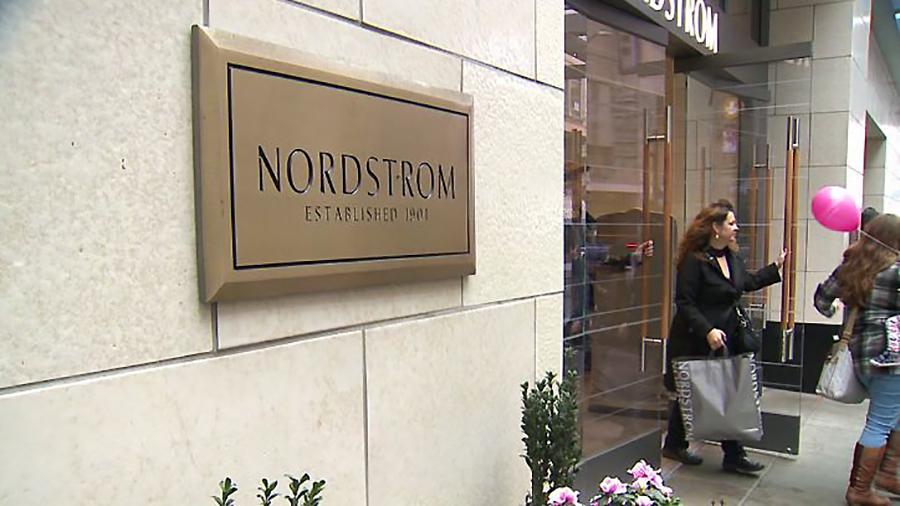Nordstrom Inc. reported a sharp decline in fourth-quarter earnings but results topped Wall Street’s target. Net sales decreased 20 percent, which improved sequentially by 600 basis points relative to the third quarter, after adjusting for a shift of the Nordstrom Anniversary Sale.
Net earnings declined 82.9 percent to $33 million, or 21 cents a share, from $193 million, or $1.23, a year ago. Wall Street’s consensus estimate had been 16 cents. Revenue fell to $3.65 billion from $4.54 billion a year ago while analysts on average had expected $3.58 billion.
Nordstrom said overall trends improved sequentially throughout the quarter, with continued momentum exiting the year. Fourth-quarter sales reflected broad-based improvement across the Nordstrom and Nordstrom Rack brands both in stores and online. Digital represented 54 percent of total sales, compared with 35 percent for the same period last year. Enabled by Nordstrom’s market strategy to expand merchandise selection by four times on average with faster delivery, Top 10 markets continued to outperform the company average by 200 basis points.
The company continued to benefit from strengthening its financial flexibility early in the pandemic, delivering earnings before interest and taxes of $30 million and operating cash flow of $88 million in the fourth quarter.
Heading into the holidays, the company increased its receipt plans but experienced delays in inventory flow, resulting in higher inventory levels exiting the year. Most of the inventory overage reflected current receipts and non-seasonal merchandise. The company is taking actions to significantly reduce inventory levels in first quarter 2021 and be fully repositioned in the second quarter.
“We’re proud of our team’s efforts to generate another quarter of improved sales trends and positive operating cash flow in what remains an uncertain environment. Heading into 2021, we’re taking steps to improve our inventory position,” said Erik Nordstrom, chief executive officer of Nordstrom, Inc.
“Over the quarter, we successfully scaled capabilities across both of our powerful brands — Nordstrom and Nordstrom Rack. As we execute our long-term growth strategy to get closer to our customers than ever before, we’re confident in our ability to unlock the full potential of our digital-first platform to gain market share and drive profitable growth.”
Fourth Quarter Summary
- Total company net sales decreased 20 percent compared with the same period in fiscal 2019, slightly exceeding company expectations for a low-twenties percentage decrease;
- Digital sales increased 24 percent compared with the same period in fiscal 2019 and represented 54 percent of the business;
- Top-performing merchandise categories included home, active and beauty;
- For the Nordstrom brand, net sales decreased 19 percent compared with the same period in fiscal 2019. For the Nordstrom Rack brand, net sales decreased 23 percentl;
- Gross profit, as a percentage of net sales, of 33 percent decreased 160 basis points compared with the same period in fiscal 2019, primarily due to deleverage from lower sales volume and higher markdowns, partially offset by planned expense savings;
- Ending inventory decreased 3 percent from last year. While inventory levels were above its plan, the majority of the overage reflected current receipts and non-seasonal merchandise, and the company is taking actions to clear excess seasonal and underperforming categories;
- Selling, general and administrative (“SG&A”) expenses, as a percentage of net sales, of 35 percent increased 470 basis points compared with the same period in fiscal 2019, primarily due to deleverage from lower sales volume and higher labor and shipping expenses associated with COVID-19 during the holiday season, partially offset by planned expense savings. The company continued to benefit from rebasing its cost structure, reducing overhead costs by approximately 15 percent from last year. Approximately 300 basis points of expenses associated with COVID-19 are not expected to recur in fiscal 2021;
- Earnings before interest and taxes (“EBIT”) was $30 million, or 0.8 percent of net sales, compared with $299 million, or 6.7 percent of net sales for the same period in fiscal 2019;
- Income tax benefit of $51 million, primarily reflects the additional benefit from the impact from the CARES Act, bringing the company’s full-year effective tax rate to 44 percent;
- Net earnings were $33 million compared with $193 million during the same period in fiscal 2019;
- Nordstrom generated fourth-quarter operating cash flow of $88 million, the third consecutive quarter of positive cash flow;
- During the fourth quarter, the company fully paid its revolving line of credit, ending the year with $1.5 billion in liquidity including $0.7 billion in cash.
Fiscal 2021 Outlook
- Nordstrom is focused on increasing total shareholder returns through four key financial objectives: accelerating revenue growth, expanding operating profit margin, improving return on invested capital and generating cash flow. While the timing of recovery of customer demand remains uncertain, the company has provided the following financial expectations for fiscal 2021, which assume stores remain open during the year;
- Revenue, including retail sales and credit card revenues, is expected to grow more than 25 percent, with digital representing approximately 50 percent of sales;
- EBIT margin is expected to be approximately 3 percent of sales;
- Income tax rate is expected to be approximately 27 percent;
- Leverage ratio is expected to be approximately 3x by year-end;
- For the first half, EBIT is expected to be approximately breakeven, reflecting approximately 45 percent of total year sales.
Photo courtesy Nordstrom













